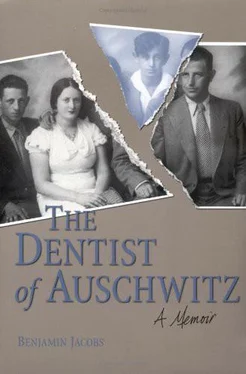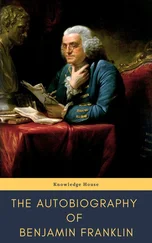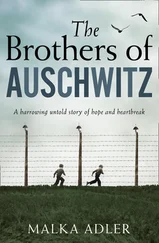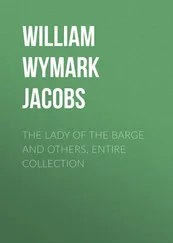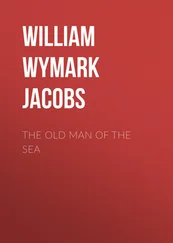SS-Unterscharführer Gunther Hinze: His name was found in the Fürstengrube dentist reports as Sanitätsdienstgefreiter and in the records of the SS-Hygiene Institute. [9] Log 8, S. Kr 409, BL 87 u. 207, Microfilm 323.
SS-man Koch: A Fürstengrube kitchen chef, Koch was tried in absentia and, since no particular charges were filed, his trial was dismissed.
SS-Hauptsführer Otto Moll: Arrested in 1945, Moll was tried by the Kraków High Tribunal and found guilty of terrible crimes. He was sentenced to death and hanged the same year.
SS-man Ohlschlager: He was a guard at Auschwitz I and at Fürstengrube. He was tried in absentia but since no specific criminal acts could be established the trial dismissed. [10] APMO. Sign. Mat. 616a, Bd, 48, S. 71.
SS-Unterscharführer Pfeiffer: As Rapportführer at Fürstengrube, Pfeiffer’s signature was found on camp records. But since accusations were not available, his trial was dismissed. [11] GmbH, Nr. 72829, B1.230.
SS-man Unterscharführer Erich Adolf Voigt: According to dental station reports, Voigt was a Sanitätsdienstgard at Fürstengrube beginning in May 1943 and at Dora-Mittelbau in 1945. No specific accusation could be established. His trial was dismissed. [12] SS trial, Sign.Mat./589.
Many crimes at the hands of the SS men at Fürstengrube were not documented, largely because few Jewish survivors had returned to Poland after the war.
For additional records of the Fürstengrube SS team, see Tadeusz Iwaszko, Hefte von Auschwitz (Auschwitz: Verlag Staatliches Auschwitz-Museum, 1978).
Other Records
Adolph Eichmann: After the war Eichmann escaped to South America and eventually settled in Buenos Aires. in May 1960 he was captured by israeli agents. In a Jerusalem court he was tried and found guilty of crimes against humanity. Sentenced to death, he was hanged on May 31, 1962. [13] Encyclopedia Americana , 1990, vol. 9.
Dr. Josef Mengele: A long-awaited U.S. government report on the case of Nazi war criminal Mengele confirms that the “Angel of Death” of Auschwitz, wanted for the murder of 400,000 innocent victims, was in fact detained by American authorities as early as 1945 in two P.O.W. camps, but was released because his true identity was unknown. Mengele fled to South America in 1949 and found asylum in numerous countries there, including Paraguay, Uruguay, Brazil, and Argentina. On February 7, 1979, he was found dead on a beach near Sao Paulo. [14] Gerald Posner and John Ware, Mengele: The Complete Story (New York: McGraw Hill, 1986).
Walter Rauff: Rauff organized the development and production of the mobile gas vans estimated to have killed 97,000 Jews and Russians. He died of lung cancer in Santiago, Chile, in May 1983 after the failure of several attempts to secure his extradition. [15] Posner and Ware, Mengele .
Hauptscharführer Max Hans Peter Schmidt: The case of Kommandant Schmidt is vastly more complicated than those of other Fürstengrube officials. From testimony given to the investigating attorneys from Germany, the United States, and Israel, the following facts emerged: that Schmidt (1) shot exhausted inmates; (2) killed an inmate returning from the work Kommando “Humbold-Deutz”; (3) shot a Jewish attorney from Czechoslovakia; (4) shot 20 inmates pulling a wagon loaded with rations because they were unable to continue; (5) shot inmates unable to keep up; (6) ordered the shooting of inmates he had found hidden in a barn; and (7) witnessed the shooting of inmates on marches, including the march to Dora-Mittelbau.
The defendant did not take the stand. However, his attorney entered a plea of not guilty, stating that Kommandant Schmidt was not responsible for deaths or shootings and had no knowledge of such.
On April 19, 1979, Landesgericht Kiel of Schleswig-Holstein stated in its verdict as follows:
There was no confirmation that the accused had participated in or had any knowledge of these incidents. It is quite possible that he was not present during this part of the march. It must also be considered that the witnesses’ testimonies can be considered only partially because of their weakened condition and diminished ability to remember what they saw during that time. Furthermore, after thirty years, it is possible that they may be fantasizing. Therefore, no definite conclusion can be reached that those shooting actually took place, who did the shooting, and if the accused took part in such.
Based upon this, there is not sufficient evidence that the accused had participated in or had any knowledge of these incidents. Nor can the accused, Schmidt, be responsible for the shooting of inmates marching from Turmalien to Magdeburg in April 1945. Nor can he be held responsible for killing inmates hiding in the barn, or the killing of Eichler, Boot (or Booth) and the Russian inmate, name unknown.
Also, the time of such trials has expired. Only for murder, manslaughter, or accessory to murder could the defendant be brought to justice.
Therefore, Landgericht Kiel dismisses the trial. April 19, 1979.
[16] vgl. BGH St 22, 275. Mandated by Bartels Court Representative. Certified (signature illegible). Official seal of the Justiceminister des Landes Schleswig-Holstein. This quotation translated by Benjamin Jacobs.
Three survivors not present at the trial, including this author, testified to having seen Schmidt kill inmates. None of this testimony surfaced at the trial. Perhaps the verdict was predictable. The exoneration of Schmidt for all of these crimes was incomprehensible and outrages.
The Boston office of the German General Consul has urged the German Justice Department to reopen the trial. So far the department has remained silent. It is well known that the German Justice Department is still riddled with many former Nazis. It will take generations for Germany to free itself of its past.
APPENDIX C
The Record of Prisoner 141129
May 6, 1986
1V-8521/2150/1282/86
State Museum, Auschwitz-Birkenau
Mr. Benjamin Jacobs:
The State Museum of Auschwitz acknowledges your inquiry and amiably informs you that full documentation of Bronek Jakubowicz, number 141129 as prisoner in the former concentration camp Auschwitz, has not been fully preserved.
Based on existing records, the Museum can nonetheless confirm that a prisoner with the above number 141129, name unavailable, was delivered to the concentration camp Auschwitz on August 26, 1943, with a transport from a camp in the Poznan region. It is further noted that October 25, 1944, places the named prisoner in Auschwitz III, Fürstengrube. No other data are available at the Museum.
Kazimierz Smolen, Director
[17] Translated by Benjamin Jacobs.
During the interwar period, Jews living in Poland, especially my generation, were attracted by the Zionist ideology, Herzel’s “Judenstaat,” the idea that one should not wait for the Creator to send a Messiah to return his people to the homeland but should advance that conviction by working for a homeland in Palestine.
Tadeusz Iwaszko, Hefte von Auschwitz 16 (Auschwitz: Verlag Staatliches Auschwitz-Museum, 1978): 71. Quotation translated by Benjamin Jacobs.
In his book The Curtain Falls , Count Bernadotte makes no mention of having been in Neu Glassau. Hence I am not certain that he was one of the three Swedes. See Count Folke Bernadotte, The Curtain Falls , trans. Eric Lewenhaupt (New York: Alfred A. Knopf, 1945).
Читать дальше
